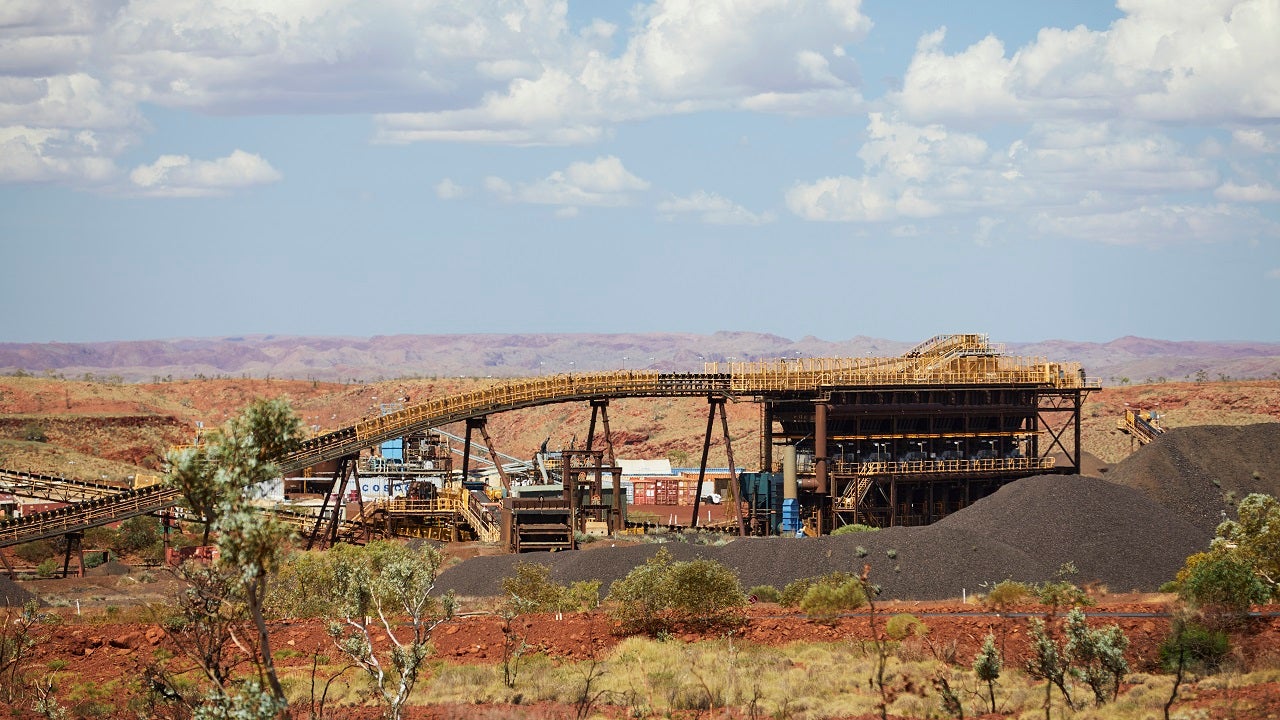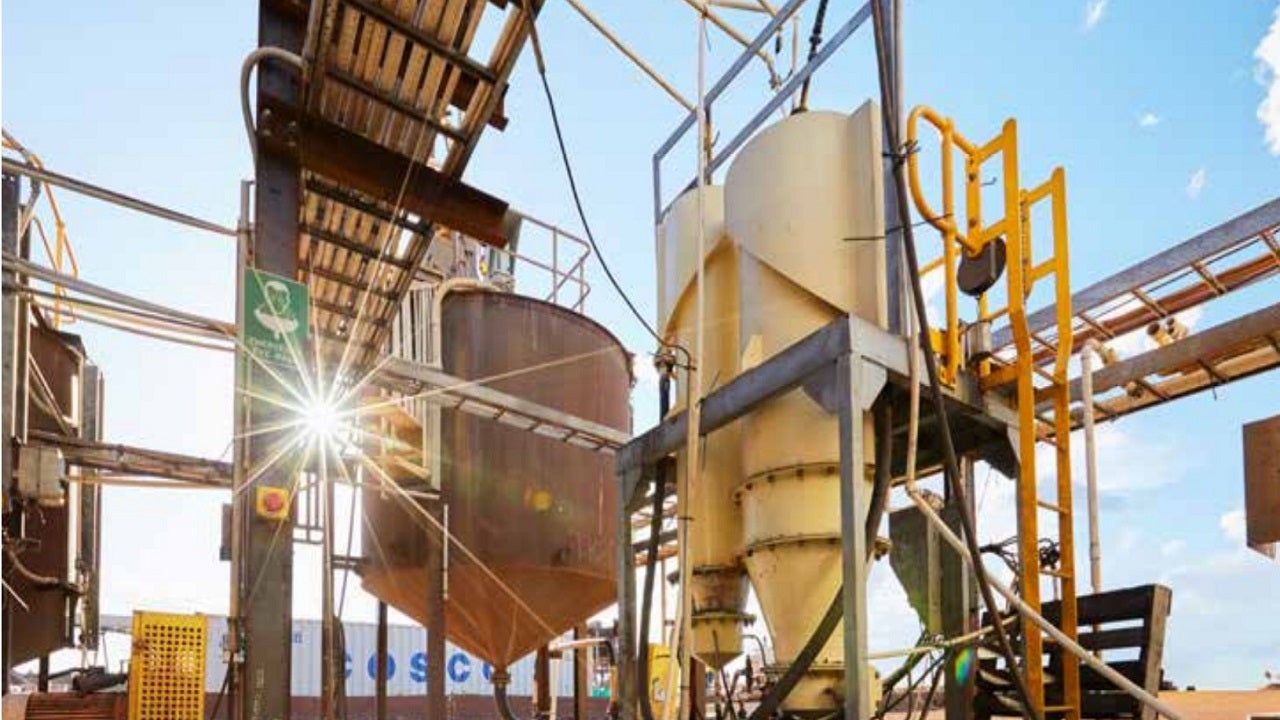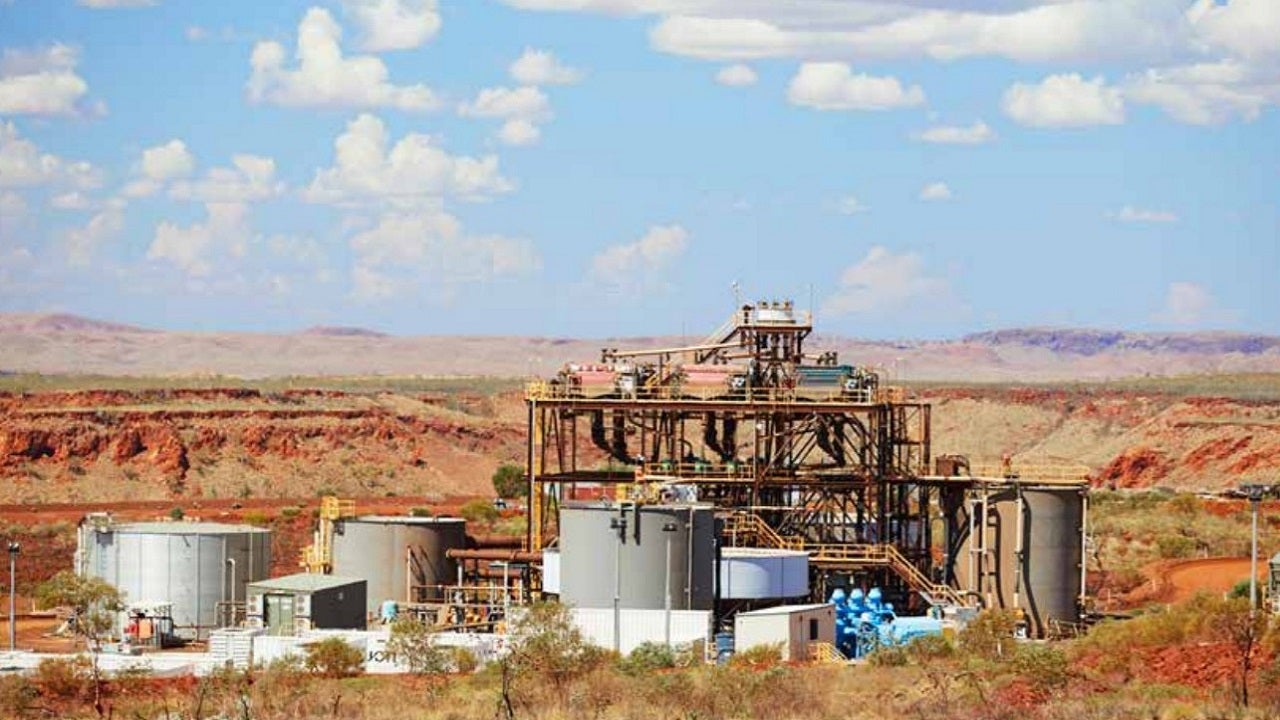The Iron Bridge project is a magnetite mine in Western Australia. It is owned by a joint venture (JV) between FMG Fortescue (69%) and Formosa Steel (31%).
The mine is currently being developed and expanded under a $2.6bn project (stage two), which follows the successful completion of the $500m stage one, which involved the construction of large-scale pilot and demonstration plants.
The Iron Bridge magnetite mine is expected to produce 22 wet million tonnes per annum (wmtpa) of high-grade, magnetite concentrate product.
First ore from the mine is planned to be shipped in the first half of 2022. The mine is expected to have a life of more than 20 years with a strip ratio of 0.6 and 30% mass recovery.
Iron Bridge project location
The Iron Bridge project is located in the Pilbara region of Western Australia.
The site is situated 145km away from the town of Port Hedland, where Fortescue’s port facility is located, and within 25km of the company’s rail line.
The project site can be accessed from Port Hedland via the Great Northern Highway, and then via gravel roads.
Geology of Iron Bridge project
The iron ore mine is located in the East Pilbara terrane of the Pilbara craton. The regional deformation is hosted by strike-slip and reverse faulting.
The area contains two major volcano-sedimentary formations, namely the Sulphur Springs group and the Soanesville group. The Sulphur Springs is a steeply dipping sequence of ultramafic to mafic volcanics overlain by Pincunah deep marine banded-iron formation (BIF) while the Soanesville group is defined by terrigenous clastic sediments.
Iron mineralisation at Iron Bridge exists within the Pincunah member, which is often concealed by cemented caps of ferruginous weathered BIF, detritus, and silcrete. The primary mineralised BIF zones within the Pincunah member are characterised by a comparatively narrow mineral suite, with magnetite mineralisation overprinting the original lithology.
The main mineralisation appears as disseminated grains and aggregates of magnetite micro-bands with subordinate gangue phases.
Iron Bridge project reserves
The Iron Bridge project is estimated to contain proved and probable reserves of 716 million tonnes (Mt) graded at 67% of Fe.
The total mineral resources of the iron ore mine are estimated to be 5,448Mt graded at 30.4% of Fe.
Mining at Iron Bridge project
The Iron Bridge project will employ low-cost open-pit truck and shovel mining method with automated haulage and drilling systems. The deposit will be mined using conventional drill and blast open-cut mining methods.
Mining and processing will be performed at the site, followed by pumping of fine-grained concentrate to Port Hedland for drying and shipping through the Fortescue port facilities. Ore will be mined from the North Star, Eastern Limb, Glacier Valley and West Star deposits.
At North Star, reverse circulation (RC) drilling was completed in the stage one mining area. It confirmed the presence of the BIF and mineralisation up to depths of 450m below the surface.
Drilling works at the Eastern Limb deposit are spaced at 100m x 50m with the extremities at 400m x 100m, while the drilling at Glacier Valley is spaced at 200m x 100m.
Drilling at West Star was completed to confirm the presence of the BIF and mineralisation to depths of more than 300m below the surface.
Processing details
A pilot processing facility was constructed during stage one development of the project, which was operated successfully to implement a new processing solution to reduce operational costs.
The ore will be crushed and processed at the site for the production of magnetite, dry process rejects, and wet tailings. The processing plant will use dry crushing and grinding circuit.
The plant will employ the KB 63-130 type gyratory crushers, which will be the largest crushers in the country. The crushers will be used to process raw iron ore from the pit and transfer it to the receiving conveyor. A slewing and luffing radial stacker will be installed to stack the secondary crushed magnetite iron ore onto a stockpile.
The plant will reduce energy consumption and wet tailings waste by more than 30% compared to conventional mining technologies through the use of Enduron® high pressure grinding rolls and GEHO® pumps.
The concentrate produced from the ore processing facility will be pumped to Port Hedland through a slurry pipeline. The concentrate slurry will be dried after reaching the concentrate handling facility and the filter cake will be sent to a stockyard within the Pilbara infrastructure port facility, from where it will be reclaimed for export.
Infrastructure at Iron Bridge project
The Iron Bridge magnetite project includes a tailings storage facility, located north of the mine.
The mine will be operated on a fly-in fly-out basis with an airstrip situated 23km from the mine site.
The village of Japal will be upgraded to include the construction and mining operations. It will include a dry and wet mess, gym and other lifestyle facilities for the employees.
The project requires up to 225MW of electricity which will be provided by low-cost power transmitted from a combination of existing and new generation sources in Pilbara.
The site will utilise medium speed gas generator sets, which have very low fuel consumption and generate fewer emissions. The generators will be integrated with a 150MW solar PV farm and battery storage as part of the Pilbara Generation project in which the company is investing to deliver hybrid solar gas energy to the mine.
The hybrid energy system is planned to be connected to Fortescue’s new Pilbara transmission network, which will include 275km of high-voltage transmission lines connecting the company’s mine sites.
Contractors involved
Snowden Mining Industry Consultants completed the mineral resource update for the project in 2019.
NRW was awarded a A$70m ($47.03m) contract in February 2020 to perform bulk earthworks and construct drainage system for the mine plant site and associated roads and infrastructure pads.
MACA was contracted to conduct bulk earthworks, including access roads and infrastructure at the site, in October 2019. Weir won a contract to supply crushing and pumping equipment for the mine in September 2019.
Civmec was contracted for the supply of modules and construction of structural concrete components for the dry plant. Thyssenkrupp received a contract to supply two gyratory crushers and a radial stacker for the mine, in April 2020.
PROK is responsible to design, manufacture and supply approximately 170 conveyor pulleys. In August 2020, CPB Contractors was selected to perform concrete and detailed earthworks for the wet processing plant.
In September 2020, Rolls-Royce, along with its agent Penske Australia, reached an agreement to supply 15 medium-speed gas generator sets to Contract Power Group to power the mine. The sets will be shipped from Bergen, Norway in 2021.
Decmil Group was selected to undertake non-mining process infrastructure works as part of a $30m contract, in September 2020. The scope of work will include the construction of a bulk fuel storage and transfer facility and a mobile maintenance complex at the site.
Pindan will design and construct the landside airport for the Iron Bridge project. The company previously received a contract to construct office buildings at the mine site.






